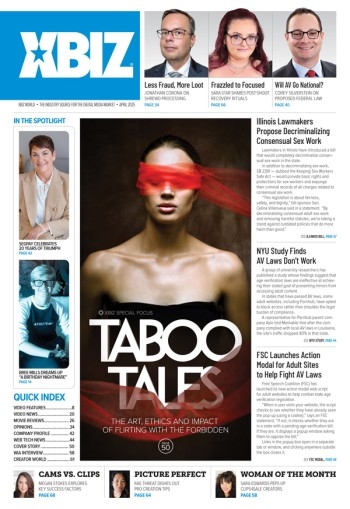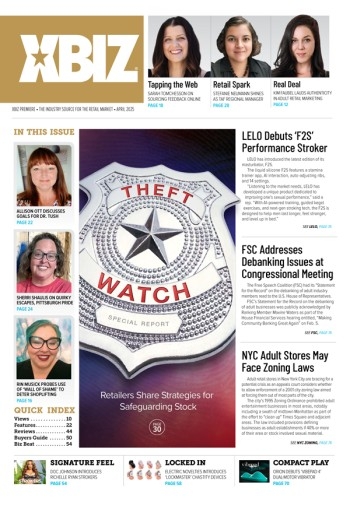Recently I had lunch with Peter, one of the most successful business coaches in Europe. We sat outside at a cafe a few kilometers from the Mediterranean Sea. It was the middle of winter but the clouds parted often enough that the sun kept us warm.
We began talking about cultures: his culture, my culture, the different cultures you find in companies. When the sun went down we went into the cafe and continued our chat by the fire.
Yes, the highs of discovery and learning are high. Opening my stats and seeing big, positive, growing numbers fills me with joy. But the lows ... whoa. They can be hard to take.
Peter had learned coaching from Marshall Goldsmith. Goldsmith is a legend. One of Goldsmith’s coaching clients was Alan Mulally, the former CEO of Boeing then, later in his career, at Ford.
Mulally took over at Ford when it was at its lowest point. The company was facing bankruptcy during the last financial crisis in 2008. In the end, it didn’t go bankrupt. The company did not even take a dollar of bailout money from the U.S. government. But it could have — all of its competitors did. The turnaround that happened at Ford was unlikely. The sure bet was that it would fail.
Mulally made airplanes at Boeing. Ford, of course, makes cars. So, when he started holding weekly meetings with his senior executives he knew less about cars than any of them.
The U.S. car companies have insular cultures. The people sitting around the table had been there for years, many of them had risen from the factory floor to executive vice president positions. Mulally was an outsider. Had there been plans for flying cars he may have had something to add from his years at Boeing. But there were no such plans. In fact, the closest experience he could reference from his flying years was how to avoid a crash landing at Ford.
At the first meeting he instituted a “traffic light” system. Each executive would speak, one after the other, to update the team on their projects. They would give a short summary then state whether the project was green (all good, on-time, on-budget), yellow (cause for concern) or red (big problems that needed solutions). As they went around the room during the first meeting each executive shared “green” updates. They looked like they were on top of things. There wasn’t a yellow or red among the 17 executives at the table.
But there was a problem with that picture. The Ford Motor Company was losing billions of dollars.
At the end of the first meeting Mulally paused. Then he shared his disbelief with his new team. There was no way that a company losing billions of dollars was “green” across the board. It was obviously “red” in many areas. At the next meeting, they would talk about what was “red” and band together as a group to support each other to find solutions. Everyone nodded in agreement.
A week later the next meeting began in a curious way. The first executive vice president was green across her three projects. The second EVP was green, too. Mulally was beginning to see the size of the challenge he faced in turning around this proud company. After all, it was a global symbol of American manufacturing power. The third EVP rose to speak. He, too, had a green update.
But then something happened. He gave a yellow update. All eyes in the conference room were on him as he described his concerns about the development of a new SUV. He wasn’t sure it was going to make it on time. There were issues with the supply chain.
He wasn’t done. His third update was red. The room was silent. The man admitted that another car model under development was doing so poorly that he actually didn’t know what to do to save it. He was breaking with the culture that had raised him and promoted him. That culture expected him to have the answers. But this man was facing challenges he did not think he could overcome. He didn’t have answers.
He was nervous. Everyone around the table froze in place, anxiously imagining how their presentation would go if they, too, risked telling the truth. They thought, “What if I admitted that I don’t know that I’m doing?” “What if I said that I don’t know how to solve the problem I’m paid to solve?”
The Ford culture was being challenged in front of their eyes.
Mulally broke the silence with a clap of his hands. Then another. He was applauding the nervous EVP standing in front of his stunned colleagues. The other EVP’s joined in the applause. The man blushed and took his seat. His colleague to his left stood up. He, too, had “red” projects. He got applause. And so it went around the table. Each executive dropped their facade and made last-minute changes to their presentations to reflect the new culture.
It was now OK at Ford to talk about things that weren’t working. There was a lot that wasn’t working. That’s what you would expect from a failing company. Recognizing the real problems gave Mulally and his team hope. If everything was “green” there was nothing to do. Once the company could start talking about “red” they could start dealing with it. They could help each other create solutions.
Incidentally, the first guy to stand up and admit to a “red” project became CEO of Ford when Mulally retired.
We’re an internet industry. Why are we talking about a car company?
Because the changes that Ford faced were driven by forces outside of their control. There was a financial crisis and people stopped buying cars. It wasn’t that Ford was a bad company, had bad products or bad executives. The company really was “green” before the crisis. The problem came when the financial crisis demanded that Ford become a different kind of company with different products and different leadership. It had to adapt quickly.
The challenges facing our tech-driven industry are also beyond the control of any company. New tools are emerging, primarily around AI, that will remake our industry. Winners will become losers and vice-versa. How will we adapt?
We’ve watched the slow death of many large, legacy companies in our industry. When they celebrate a big anniversary, we start to think they will soon be irrelevant. It’s easy to imagine the leaders of an old-school company in our industry sitting down for their weekly meeting. You can picture them reporting “green” on their individual projects while their companies face declining margins and eventual death.
What can we learn from Mulally about how to face major changes? In a word, “safety.” He recognized that the executive meetings at Ford were not safe places. Each executive wanted to be seen as a winner. Winners got bigger budgets and more prestige and higher salaries and were closer in line to the CEO job. Losers got lower budgets, less prestige, no raises and dropped off the short list to replace the CEO.
That’s the normal way things go. Everyone understood that was the culture at Ford. It seems like an accurate description of most company cultures. The problem is that it doesn’t work in times of extreme change. And the only forecast you can make about the future of our industry is that we will see more and more change.
We need to create safety to be able to embrace change. Learning is an awkward process. You must move out of your comfort zone to learn. Since the future will not be like past we will need to learn new ways of doing things.
Google recently completed a study of their most successful teams. They’re a data-driven company. They know just about everything there is to know about their people. The question they wanted to answer was, “what makes a team successful?”
The executives doing the analysis had lots of ideas to test.
Was the key to a successful team putting really smart people together? At Google, there are lots of smart people. Some are smarter than others. Do the real brainiacs do best?
Another idea was that diverse backgrounds lead to high performance in teams. Put together an Indian engineer with a philosophy major from Mexico and add an economist from Japan and a marketer from the U.K. and just wait for the great results.
A third idea was that success depends on experience. If people know their subject well, then they will outperform less experienced teams.
There were many other ideas. Some were related to the team culture, others to the difficulty of the objectives. They asked lots of questions of their data on teams and performance.
Then they ran the data. There was a lot of it. They had collected data on the makeup, culture, objectives and performance of hundreds of teams.
Only one trend emerged.
There were smart teams that did well, of course, but there were relatively less smart teams that did even better. Experts outperformed newbies, except when they didn’t. Diversity helped but teams that looked like they were all from the same college fraternity also did well.
There was just one thing that determined the success of a team at Google: safety.
Google is terrified that it is going to lose its dominance. It studies the downfall of other leading companies. As a company, they are committed to taking risks and embracing new technology. That means doing new things. New things are scary. Everyone is awkward when they are learning. Google sees its job as making people feel safe to look silly, to make mistakes ... to learn.
The list of Google’s failed projects is long. They tried to be your social media platform with Google Plus and failed. They entered the “wallet” space and left. There are dozens of examples. Most successful companies wouldn’t embarrass themselves the way that Google does. There is something larger at work, a bigger goal. “The Goog” wants a culture where it is OK to make mistakes. They want people to learn. They want high performance.
How does your culture look? Is it like Ford before or after Mulally? Is it like Google?
A few months ago, I had my own choice to make about what kind of culture I wanted. We discovered that we had been making a mistake. It was part of the multiyear, multimillion-dollar investment we are making in AI. It’s a companywide effort.
The mistake was a difference between a data set we used to train the AI and the data used in the production system. As anyone working in applied statistics knows, 90 percent of the work is getting good, clean data. It turned out that one of our variables was off. It wasn’t the most important one, it wasn’t even in the top five, but it mattered and my heart sank when our head of AI shared the news.
We caught it. We went on to fix it in the following iteration. But my first reaction was despair. “How could we miss something so important?” “What else are we missing?” It tested my resolve. Yes, the highs of discovery and learning are high. Opening my stats and seeing big, positive, growing numbers fills me with joy. But the lows ... whoa. They can be hard to take.
My next reaction was to be mad. I wanted to say, “Never do this again!” I wanted to prevent this from happening in the future.
But I can’t. It’s going to happen. If we are trying to do new things we are signing up (wittingly or unwittingly) for disappointment and confusion.
In these moments, I often think of exercise. I don’t like working out. I do it. But I don’t like it. I do it because if I don’t exercise I’m guaranteed to end up in a lot of pain. So, I choose to take some pain for half an hour every other day or so to avoid the constant pain. I feel better a few hours after exercising. Lack of exercise brings diseases that take far longer to recover from — if recovery is even possible.
I’m choosing to enter into confusion because if I’m not learning I’m going to get lost. The world, the industry, the tools: they are all changing. Companies will lose if they don’t change, too.
So, we celebrated finding the mistake in our data. We want people to feel safe to learn.
Any culture that doesn’t put safety first is putting itself at risk.
Thierry Arrondo is the managing director of Vendo, which develops artificial intelligence systems that allow merchants to dynamically set prices for each unique shopper.







